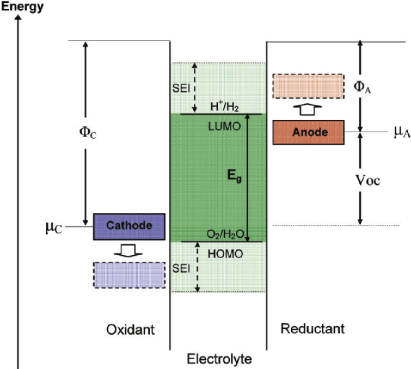 “Best of the year” lists always catch our eye. They’re a great way to check if we missed any important movies, books or news. They also show us what our peers focused on and suggest trends for the coming year.
“Best of the year” lists always catch our eye. They’re a great way to check if we missed any important movies, books or news. They also show us what our peers focused on and suggest trends for the coming year.
In that spirit, we’ve compiled this list of the most popular papers of 2019. These open access articles were trending in the Mendeley Catalog in 2019, meaning that they had the largest growth in readership over the course of the year.
There’s one paper across eight major disciplines of science: computer science; education; physics and astronomy; environmental science; medicine; neuroscience; chemistry; and material science. It’s fascinating to see the range of topics of interest across these disciplines, including artificial intelligence, conservation, memory and process improvement.
The Mendeley Catalog is an ever-growing resource that currently contains over 300 million research papers. You can search the entire Catalog using the search tool that appears in the main toolbar in your Mendeley.com interface. You can also get personalized recommendations of new papers to read from Mendeley Suggest by creating a Mendeley account.
Computer Science
Methods for interpreting and understanding deep neural networks
https://www.mendeley.com/catalogue/methods-interpreting-understanding-deep-neural-networks/
Abstract extract:
“This paper provides an entry point to the problem of interpreting a deep neural network model and explaining its predictions […] The set of methods covered here is not exhaustive, but sufficiently representative to discuss a number of questions in interpretability, technical challenges, and possible applications.”

Education
The Use of Cronbach’s Alpha When Developing and Reporting Research Instruments in Science Education
https://www.mendeley.com/catalogue/cronbachs-alpha-developing-reporting-research-instruments-science-education/
Abstract extract:
“Cronbach’s alpha is a statistic commonly quoted by authors to demonstrate that tests and scales that have been constructed or adopted for research projects are fit for purpose […] This article explores how this statistic is used in reporting science education research and what it represents.”
Physics and Astronomy
Theory of dynamic critical phenomena
https://www.mendeley.com/catalogue/theory-dynamic-critical-phenomena/
Abstract extract:
“When a system is brought to a critical phase transition, such as the gas-liquid critical point where the density difference between liquid and gas disappears, or the Curie point of a ferromagnet where the spontaneous magnetization disappears, many of its properties exhibit singular behavior.”
Environmental Science
Human–Wildlife Conflict and Coexistence
https://www.mendeley.com/catalogue/humanwildlife-conflict-coexistence/
Abstract extract:
“Recent advances in our understanding of conflict have led to a growing number of positive conservation and coexistence outcomes. I summarize and synthesize factors that contribute to conflict, approaches that mitigate conflict and encourage coexistence, and emerging trends and debates.”
Medicine
Worldwide trends in diabetes since 1980: A pooled analysis of 751 population-based studies with 4.4 million participants
https://www.mendeley.com/catalogue/worldwide-trends-diabetes-since-1980-pooled-analysis-751-populationbased-studies-44-million-particip/
Abstract extract:
“One of the global targets for non-communicable diseases is to halt, by 2025, the rise in the age standardised adult prevalence of diabetes at its 2010 levels. We aimed to estimate worldwide trends in diabetes, how likely it is for countries to achieve the global target, and how changes in prevalence, together with population growth and ageing, are affecting the number of adults with diabetes.”

Neuroscience
Competition between engrams influences fear memory formation and recall
https://www.mendeley.com/catalogue/competition-between-engrams-influences-fear-memory-formation-recall/
Abstract extract:
“Collections of cells called engrams are thought to represent memories. Although there has been progress in identifying and manipulating single engrams, little is known about how multiple engrams interact to influence memory. In lateral amygdala (LA), neurons with increased excitability during training outcompete their neighbors for allocation to an engram. We examined whether competition based on neuronal excitability also governs the interaction between engrams.”
Chemistry
The state of understanding of the lithium-ion-battery graphite solid electrolyte interphase (SEI) and its relationship to formation cycling
https://www.mendeley.com/catalogue/state-understanding-lithiumionbattery-graphite-solid-electrolyte-interphase-sei-relationship-formati/
Abstract extract:
“An in-depth historical and current review is presented on the science of lithium-ion battery (LIB) solid electrolyte interphase (SEI) formation on the graphite anode, including structure, morphology, composition, electrochemistry, and formation mechanism.”

Material Science
Surface texture metrology for metal additive manufacturing: a review
https://www.mendeley.com/catalogue/surface-texture-metrology-metal-additive-manufacturing-review/
Abstract extract:
“A comprehensive analysis of literature pertaining to surface texture metrology for metal additive manufacturing has been performed. This review paper structures the results of this analysis into sections that address specific areas of interest: industrial domain; additive manufacturing processes and materials; types of surface investigated; surface measurement technology and surface texture characterisation.”

Find more papers of interest by searching the Mendeley Catalog at Mendeley.com.
Register with or sign in to Mendeley to get personalized recommendations for papers from Mendeley Suggest.




































